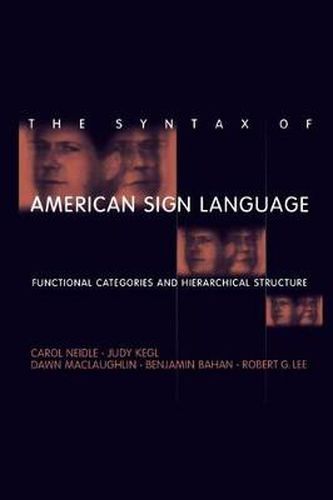Readings Newsletter
Become a Readings Member to make your shopping experience even easier.
Sign in or sign up for free!
You’re not far away from qualifying for FREE standard shipping within Australia
You’ve qualified for FREE standard shipping within Australia
The cart is loading…






Recent research on the syntax of signed languages has revealed that, apart from some modality-specific differences, signed languages are organized according to the same underlying principles as spoken languages. This book addresses the organization and distribution of functional categories in American Sign Language (ASL), focusing on tense, agreement, and wh-constructions.Signed languages provide illuminating evidence about functional projections of a kind unavailable in the study of spoken languages. Along with manual signing, crucial information is expressed by specific movements of the face and upper body. The authors argue that such nonmanual markings are often direct expressions of abstract syntactic features. The distribution and intensity of these markings provide information about the location of functional heads and the boundaries of functional projections. The authors show how evidence from ASL is useful for evaluating a number of recent theoretical proposals on, among other things, the status of syntactic agreement projections and constraints on phrase structure and the directionality of movement.
$9.00 standard shipping within Australia
FREE standard shipping within Australia for orders over $100.00
Express & International shipping calculated at checkout
Recent research on the syntax of signed languages has revealed that, apart from some modality-specific differences, signed languages are organized according to the same underlying principles as spoken languages. This book addresses the organization and distribution of functional categories in American Sign Language (ASL), focusing on tense, agreement, and wh-constructions.Signed languages provide illuminating evidence about functional projections of a kind unavailable in the study of spoken languages. Along with manual signing, crucial information is expressed by specific movements of the face and upper body. The authors argue that such nonmanual markings are often direct expressions of abstract syntactic features. The distribution and intensity of these markings provide information about the location of functional heads and the boundaries of functional projections. The authors show how evidence from ASL is useful for evaluating a number of recent theoretical proposals on, among other things, the status of syntactic agreement projections and constraints on phrase structure and the directionality of movement.